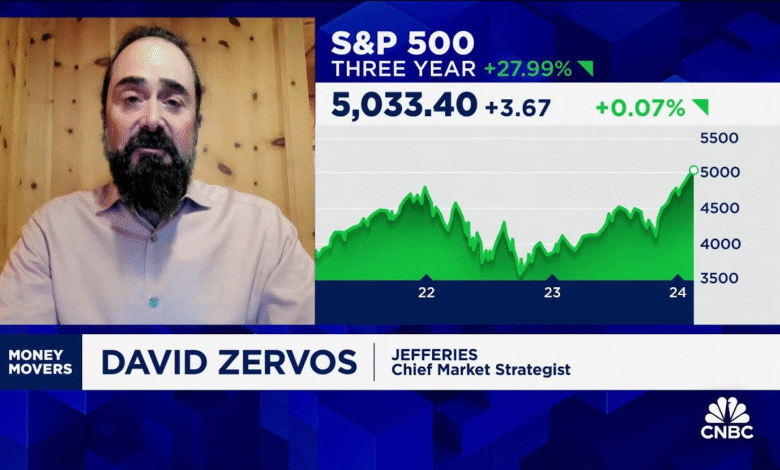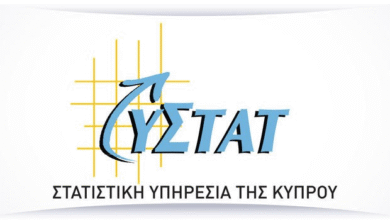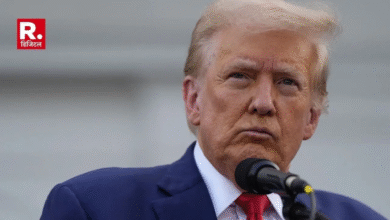David Zervos Advocates Interest Rate Cuts to Boost Economy

In the ever-evolving world of economic policy, David Zervos’ interest rate cuts have sparked considerable attention. As a seasoned Wall Street veteran and chief market strategist at Jefferies, Zervos has been vocal about the necessity for the Federal Reserve to implement aggressive interest rate reductions. During recent discussions, he emphasized that the central bank should not be deterred by rising inflation pressures, particularly illustrated by the latest producer price index data. Instead, Zervos argues that proactive monetary policy—specifically a half-point cut—will foster job creation and prevent a deterioration in the labor market. His perspective positions him as a leading contender for the Fed chair role, advocating for a more market-savvy approach to economic challenges ahead.
As discussions around monetary policy intensify, David Zervos advocates for swift interest rate adjustments to stimulate the economy. The possible future Fed chair contends that a timely reduction in benchmark rates is crucial to navigating inflationary trends while fostering job growth. Zervos believes that the Federal Reserve’s current hesitance may hinder economic dynamism, especially in light of the recent employment landscape. Through a critical lens, he promotes the idea that cutting rates can alleviate pressure on the labor market and spark broader economic benefits. His insights reflect a growing sentiment among economists who urge a reevaluation of the central bank’s current strategy in tackling inflation and advancing job creation.
The Case for Aggressive Interest Rate Cuts
David Zervos, the chief market strategist at Jefferies, has been vocal about the need for aggressive interest rate cuts by the Federal Reserve. His insistence on a half percentage point reduction highlights a significant shift in monetary policy thinking as Wall Street grapples with rising inflation pressures. Zervos argues that the time for action is now, as delaying such measures could lead to a more pronounced slowdown in the labor market. This perspective is rooted in his belief that aggressive cuts not only combat inflation effectively but also promote job creation, paving the way for a stronger economy.
Moreover, Zervos addresses the growing concern among economists about the cost of indecision. With recent PPI data suggesting persistent inflation, he remains steadfast in his assertion that the Federal Reserve should not remain overly cautious. His approach echoes the sentiment of several analysts who fear that current monetary policy might stifle growth rather than encourage it. By prioritizing immediate cuts, Zervos believes the Fed can foster an environment conducive to sustainable job growth and financial stability.
David Zervos and the Future of Monetary Policy
As a potential candidate for the position of Fed chair, David Zervos represents a new wave of thought regarding how monetary policy is crafted in response to fluctuating economic conditions. Unlike traditional policymakers who might prioritize inflation control at all costs, Zervos’ market-centric approach may usher in a more nuanced understanding of economic stimuli. He advocates for integrating market-savvy leadership within the Federal Reserve, arguing that those who intimately understand market dynamics can make more informed decisions about interest rate reductions.
The implications of Zervos’ philosophy extend beyond mere interest rate adjustments; they suggest a broader willingness to adapt monetary frameworks to better align with real-world economic challenges. By emphasizing the importance of staying responsive to labor market demands and leveraging technological advancements that yield disinflationary effects, Zervos could redefine how the Fed tackles the dual mandates set by Congress. His potential leadership could signal a paradigm shift towards a more flexible and proactive approach to managing the economy.
Challenges of Inflation Control in a Dynamic Labor Market
The Federal Reserve faces a complex backdrop of rising inflation pressures and an evolving labor market. With experts like David Zervos advocating for more substantial interest rate cuts, the question arises: how do we balance the need for price stability with job creation? Zervos posits that the current monetary policy could potentially be too restrictive, hindering growth. His insights suggest that a more aggressive stance on rate cuts could alleviate conditions stifling employment opportunities and facilitate economic recovery.
Dealing with inflation requires a careful dance between managing interest rates and fostering job growth. The risk of tightening monetary policy too swiftly may lead to a stagnation in job creation, making it imperative for the Fed to reassess its strategies. Zervos’ argument for aggressive cuts, framed within the context of market pressures and labor demands, forces policymakers to reconsider the potential repercussions of their decisions on long-term economic health.
The Political Landscape Surrounding Interest Rates
David Zervos’ perspective on interest rate cuts is also complicated by the political dynamics surrounding the Federal Reserve. With President Trump exerting pressure for significant reductions in the federal funds rate, Zervos acknowledges the intertwining of economic and political spheres. This reality underscores the need for Fed leaders to navigate not just economic indicators like inflation and employment, but also the political pressures that come with their roles.
The potential for political pushback on monetary policy decisions cannot be ignored. Zervos’s stance highlights the importance of having independent voices within the Fed who can advocate for evidence-based policies amid political scrutiny. In an environment where external influences could sway monetary decisions, Zervos aims to foster a debate grounded in facts and committed to the mandates of Congress, ensuring that sound economic principles guide the Fed’s actions.
Inflation Pressures and Economic Conditions
The latest inflation data, particularly from the producer price index, has raised alarms among economists regarding the state of the economy. Despite these pressures, David Zervos remains optimistic about pushing for significant interest rate reductions. By prioritizing a proactive monetary policy, he believes that the Fed can counteract inflationary trends while simultaneously stimulating job creation across various sectors. Zervos’s position is a testimony to his commitment to balancing the critical functions of monetary policy amid fluctuating economic indicators.
Furthermore, recognizing that inflation may not be uniform across different sectors of the economy, Zervos advocates for tailored approaches that account for the variances in market conditions. His insights point to a potential recalibration of how monetary policy is typically enacted, suggesting that the Fed must adapt to these changing dynamics to maintain economic stability and growth.
The Role of Job Creation in Economic Policy
Job creation remains at the forefront of economic dialogues, especially as experts like David Zervos push for interest rate reductions. Zervos argues that fostering a healthy job market is essential for maintaining overall economic growth. He implies that lowering the federal funds rate could lead to increased business investment, thereby generating new job opportunities and reducing unemployment rates in the long run.
Moreover, the link between monetary policy adjustments and job creation is underscored by Zervos’s assertion that the Fed’s actions have direct implications for labor market conditions. By embracing a more aggressive approach to interest rate cuts, he believes that the central bank can effectively reduce barriers for businesses to thrive and innovate, ultimately leading to a robust job creation environment.
Market Sentiments and Future Reforms
Market sentiments concerning interest rate cuts are shifting, with many analysts, including Zervos, advocating for substantial policy reforms. As central bankers deliberate on the future of monetary policy, the prevailing market environment calls for a reassessment of conventional wisdom. Zervos’s focus on integrating market insights into monetary decisions could lead to more effective strategies for navigating economic challenges. His approach might reflect a growing understanding that traditional policies may not suffice in today’s complex economic landscape.
The potential for significant shifts in monetary policy under Zervos’s influence raises important questions about future reforms. His emphasis on a more agile and responsive Federal Reserve could signal a new era where market dynamics dictate policy adjustments with greater immediacy. This alignment of monetary policy with market realities could equip the Fed to tackle inflation concerns more effectively while promoting sustainable economic growth.
David Zervos’ Economic Philosophy
David Zervos is emerging as a key figure in the conversation surrounding Federal Reserve policies. His economic philosophy encompasses a belief that the Fed must act decisively to alleviate restrictive monetary conditions. By advocating for aggressive interest rate cuts, Zervos aligns his approach with the necessity of adapting fiscal strategies to accommodate the ever-evolving economic landscape. His insights contribute to a broader dialogue on how monetary policy can evolve in response to changing market dynamics.
Moreover, Zervos encourages a paradigm shift that values practical market insights alongside traditional economic theories. By promoting the inclusion of diverse viewpoints within the Federal Reserve, he seeks to foster a more comprehensive understanding of how various economic factors interplay, ultimately enhancing the effectiveness of U.S. monetary policy.
The Impact of Technology on Monetary Policy
In the context of his advocacy for aggressive interest rate cuts, David Zervos also discusses the role of technology in shaping monetary policy decisions. He argues that technological advancements are creating disinflationary pressures that the Federal Reserve must consider when crafting its strategies. By recognizing these shifts, the Fed can better tailor its approach to support economic growth while also combating inflation.
Zervos’s observations point to the necessity of embracing innovation within the framework of monetary policymaking. Leveraging technology’s impact on the economy can lead to more nuanced understandings of price fluctuations and employment dynamics. By integrating technology-oriented perspectives, the Federal Reserve could adopt a more forward-thinking approach to economic management, aligning interest rate strategies with contemporary economic realities.
Navigating Political Realities in Monetary Policy
The interplay between monetary policy and political reality is crucial in understanding the potential moves from the Federal Reserve. As David Zervos gears up for possible leadership within the Fed, he recognizes that navigating political affiliations while maintaining economic integrity will be paramount. Previous leaders have faced political scrutiny regarding interest rate decisions, often resulting in conflicting pressures that can complicate policymaking.
Zervos’s awareness of these dynamics reflects a nuanced understanding of the challenges faced by central bankers. He advocates for a return to fact-driven debates focused on achieving economic mandates rather than succumbing to political pressures. By establishing a clear dialogue rooted in economic principles, Zervos believes the Federal Reserve can safeguard its mission while addressing the urgent needs of the U.S. economy.
Frequently Asked Questions
What is David Zervos’ stance on interest rate cuts by the Federal Reserve?
David Zervos, the chief market strategist at Jefferies, advocates for aggressive interest rate cuts by the Federal Reserve. He argues that the Fed should implement a half percentage point cut to mitigate economic slowdown and enhance job creation.
How does David Zervos believe interest rate reductions will impact job creation?
According to David Zervos, implementing interest rate reductions could significantly boost job creation. He maintains that aggressive monetary policy adjustments are necessary to prevent a labor market slowdown and potentially create up to a million new jobs.
What rationale does David Zervos provide for applying interest rate cuts in the current economic climate?
David Zervos emphasizes that current monetary policy is too restrictive and argues that the Federal Reserve should not shy away from cutting interest rates despite inflation pressures indicated by the producer price index. He believes these cuts are crucial for sustaining economic growth and job creation.
How does David Zervos respond to inflation pressures regarding interest rate cuts?
David Zervos suggests that the inflation pressures, reflected in data such as the July producer price index, should not deter the Federal Reserve from pursuing interest rate cuts. He holds that a proactive approach in monetary policy will ultimately benefit the economy.
Who else is advocating for interest rate cuts along with David Zervos?
Alongside David Zervos, economist Marc Sumerlin has expressed support for half-point interest rate cuts, stating that the Federal Reserve has been overly cautious in its approach to combating inflation, which aligns with Zervos’ views on aggressive monetary policy.
What is the current federal funds rate, and how much does Zervos believe it should be cut?
The current federal funds rate stands at approximately 4.33%. David Zervos believes this rate could be reasonably lowered by 200 basis points, emphasizing that aggressive cuts are essential to responding effectively to economic challenges.
What concerns does David Zervos have about the Federal Reserve’s current monetary policy?
David Zervos is concerned that the Federal Reserve’s current monetary policy is too restrictive and may hinder economic growth and job creation. He advocates for a reevaluation of the rate-setting approach to foster a more conducive environment for labor market expansion.
How does political pressure relate to David Zervos’ advocacy for interest rate cuts?
David Zervos acknowledges that political pressures, such as those from figures like President Trump, are part of the landscape when discussing monetary policy. However, he emphasizes that discussions about interest rate cuts should be based on factual data and the broader economic mandates set by Congress.
| Key Point | Detail |
|---|---|
| David Zervos’ Position | Zervos supports aggressive interest rate cuts as a potential candidate for Fed Chair. |
| Interest Rate Reduction Advocacy | He has been advocating for a 0.5% cut during the last three Fed meetings. |
| Response to Inflation Data | Zervos believes the Fed should not be influenced by the recent rise in producer price index (PPI) data. |
| Labor Market Considerations | Zervos argues that rate cuts could help create up to a million jobs by preventing a labor market slowdown. |
| Political Context | Zervos acknowledges the political implications of the Fed chair position but emphasizes fact-driven discussions. |
| Comparison with Other Candidates | He is one of the few candidates with a more market-focused background rather than purely economic. |
| Trump’s Influence | President Trump has aggressively advocated for substantial rate cuts, suggesting up to 3%. |
| Market Savvy | Zervos promotes the inclusion of market-competent individuals in monetary policy. |
Summary
David Zervos interest rate cuts reflect a significant shift in the financial landscape as he positions himself as a frontrunner for the Fed Chair position. Advocating for substantial and immediate rate reductions, Zervos believes that such actions are crucial to prevent economic slowdown and strengthen the job market. His views align with current economic pressures but prioritize a broader market perspective, distinguishing him from other candidates. As discussions about who will succeed Jerome Powell unfold, Zervos’ stance on interest rate cuts could influence future monetary policy direction.




